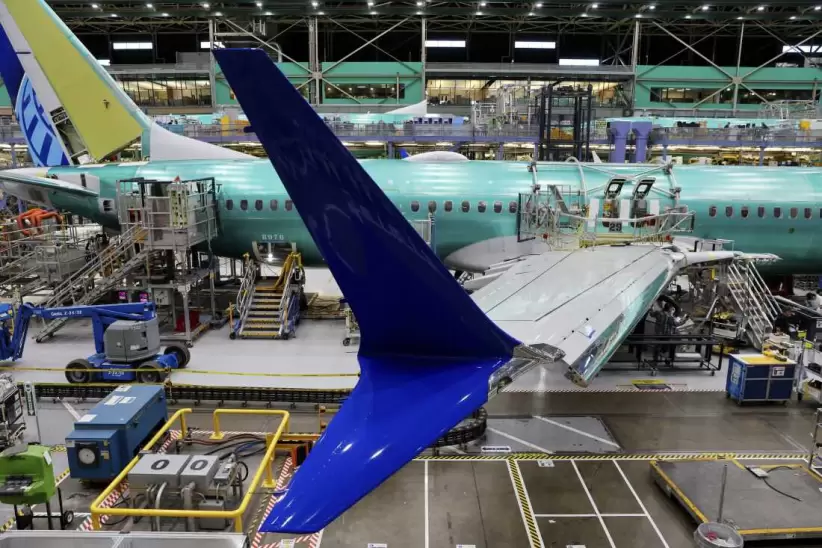Boeing’s losing streak has now lasted six years, beginning in 2019 with the global grounding of the 737 Max following two fatal crashes.
The bad news is due in part to the disruption caused by a seven-week strike by Boeing workers, which halted production of its best-selling jet, the 737 Max . Chronic delays and cost overruns on key programs in the company’s defense division also played a role. Added to this are the endless production problems with the 737 Max and 787 , which Boeing has been unable to fully resolve.
Boeing’s numbers
Boeing’s losing streak has now spanned six years, beginning in 2019 with the global grounding of the 737 Max following two fatal crashes. Since then, the company’s total losses have risen to a staggering $35.7 billion .
While fourth-quarter earnings season is not over yet, Boeing’s dismal 2024 results firmly position it as the biggest loss-maker in the S&P 500 since 2019, according to FactSet data . Uber , which had been jostling for second place with Boeing until 2023, is expected to report a profit in 2024. Meanwhile, Carnival , the third-place cruise company, posted net income of $1.9 billion in 2024, narrowing its total losses over the past six years to $21 billion .
The biggest losses of the 21st century
Looking at the past quarter-century , Boeing ranks sixth among the S&P 500’s biggest loss-making companies . The top spot on this disgraceful list is American International Group (AIG) . Adjusting to 2024 dollars for a fair comparison, the insurer lost a staggering $162 billion between 2008 and 2009, when its balance sheet collapsed due to its heavy exposure to the housing market in the midst of the Great Recession . That figure is four times Boeing’s total inflation-adjusted loss so far, which stands at $39.4 billion .

In second place is General Motors , which between 2005 and 2008 suffered a loss of US$130 billion in 2024 dollars. The automaker declared bankruptcy the following year and managed to reorganize thanks to a US$33 billion financial bailout from the United States and Canadian governments.
A negative record
Where Boeing does rank first is in having accumulated the most losses among a select group of 27 S&P 500 companies that have had at least six consecutive years of negative results dating back to 1999. Far behind in second place is the former parent company of Texas power provider TXU , which lost an inflation-adjusted total of $28.8 billion between 2010 and 2015, leading to bankruptcy .
Boeing, however, is far from leading the ranking of the longest losing streaks in the S&P 500. Industrial parts and repair company DEX recorded 18 consecutive years of red numbers before returning to profitability in 2019. Meanwhile, SBA Communications and LiveNation share second place with 17-year losing streaks, which fortunately they have already managed to reverse.
Despite its dismal financial performance, institutional investors have remained willing to support Boeing’s finances thanks to its robust order book , which currently has 5,595 aircraft awaiting delivery. If new CEO Kelly Ortberg can get production lines back on track, these orders could translate into billions of dollars in revenue . With this in mind, the company managed to raise $24 billion late last year through the sale of stock and convertible debt.
However, there are no signs that Boeing’s losing streak will end in 2025. Chief Financial Officer Brian West warned analysts during the company’s third-quarter earnings call that it expects to post negative cash flow for the full year.

